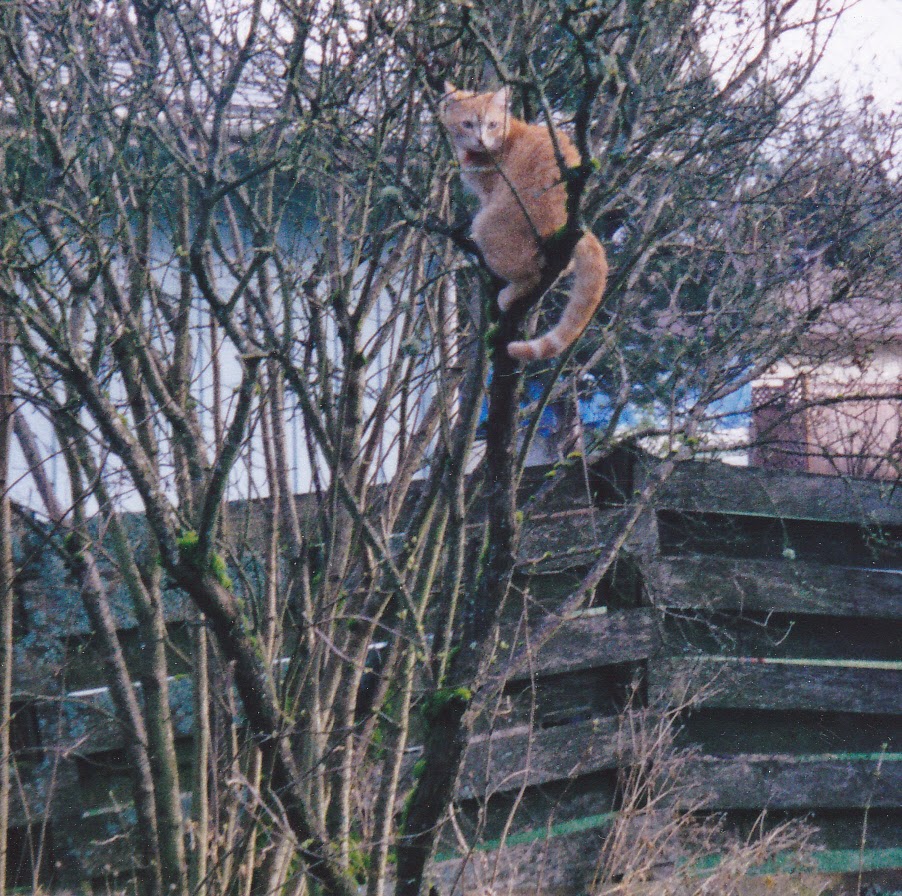 |
| Oliver’s up a tree. |
In my classes, feedback about student writing often comes with the comment, “Very descriptive.” Yet if pressed, most new writers can’t really say what “descriptive” means. Does it help imagine the story world? Bring characters into focus?
Writing Tip for Today: Fiction demands a certain amount of “describing” in order to make it come alive or seem believable. How can you use description in a way that keeps readers turning pages?
Avoid CHUNKING.
The fastest way to improve your fiction’s descriptions is to steer away from dumping it all in one place. At the beginning of a scene many writers load a huge paragraph with all sorts of modifiers, lists or other ways to describe the scene. Keep in mind, though, that readers will not retain the details you give them if they are too far away from the scene’s action. By the time characters get onstage and start acting, the setting and other descriptors are quickly receding. Better to learn to WEAVE brief bits about the surroundings into and around the action. The closer a scenic detail is to what’s happening in the scene, the more likely readers are to retain and remember it. This helps give your readers the most complete reading experience.
Describe Through Your Character’s EYES.
Another way to keep the descriptions closely knit to the action is to tell about the scene through your POV character’s eyes. I look at a red car and think it’s loud and too racy. You see it as beautiful. Learn to filter the scenic elements (the environment) through this character. Let inanimate objects be viewed with prejudice–your character’s prejudice. Allow emotion to color the way your character sees everything around her. EX: Your character just got fired. He has to slam on the brakes when a puppy runs out into the street. Because he’s already upset, he might yell, “stupid mutt!” instead of “aaww, what a cute pup.”
Give Descriptions the Once Over.
When you meet or observe someone, rarely do you start at the person’s head and describe everything down to the toes. If you do, you might get slapped for ogling! Instead of a laundry list of how the character is dressed, the hair, the eyes, etc, treat the introduction of a character the way you would notice someone for the first time. You likely note a few outstanding details rather than a comprehensive list. When you describe a character, maybe you say something about the character’s posture, a smile that lights up a room or that the guy’s wearing red suspenders. Readers want story. Yes, they want to see the character, but too many details make readers restless to get to the action. If your character stands on the red carpet too long while readers take in every detail, you may lose the story.
Bonus! Describe Characters Early On.
I don’t usually do four tips, but it’s worth saying that in describing characters, you want to do so as soon as you can in the first scene where they’re onstage. The reason for this is that if you don’t tell readers the character’s got flaming red hair pretty early on, they may have already imagined that person as a brunette. It will confuse and/or annoy readers to re-imagine the character after they’ve already made up what the person looks like.





Pingback: Writing Descriptions that Wow - Linda S. Clare